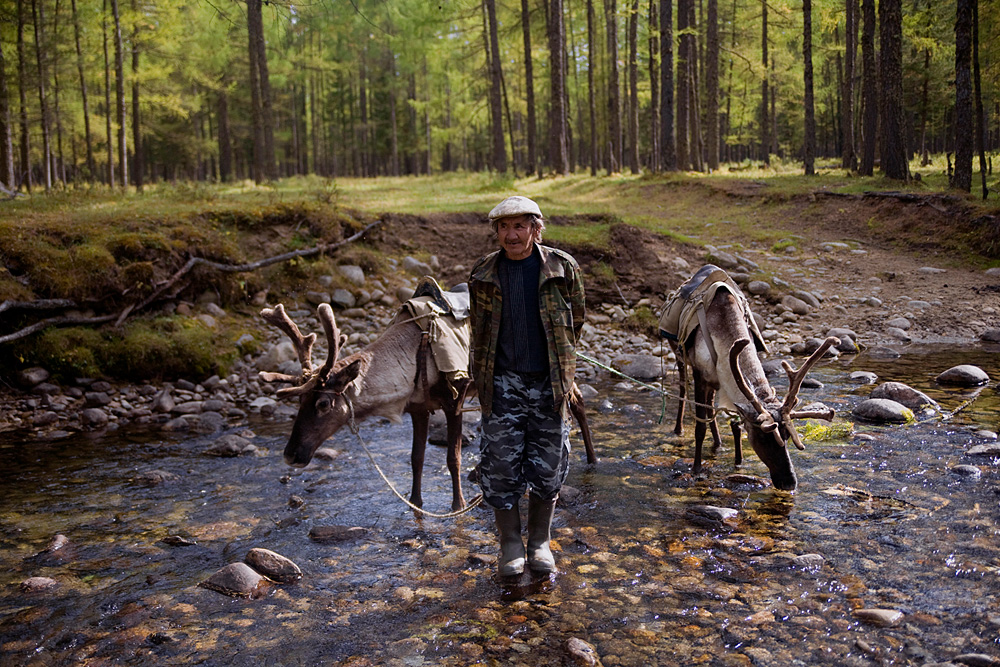Russia’s Wild East: Can you guess how this territory was conquered?

Shaman, or the devil's priest. Illustration from the book of traveler Nicolaes Witsen.
Nicolaes Witsen Shaman, or the devil's priest. Illustration from the book of traveler Nicolaes Witsen
Shaman, or the devil's priest. Illustration from the book of traveler Nicolaes Witsen
In the early 17th century, Russia was just emerging from the Time of Troubles – Polish invasions were finally beginning to cease, and the state of general anarchy was coming to an end. In 1613, Michael Romanov was chosen as the new tsar, and this marked the beginning of the Romanov dynasty. This family would continue to rule the country until the 1917 Russian Revolution and the accompanying murder of Tsar Nicholas II and his family.
During the first 100 years of this dynasty’s rule, Russian explorers traveled far and wide, claiming territories such as Kamchatka, Sakhalin, the Kuril Islands and many other places that are known as the Russian Far East.
Yakutia and the Lena River
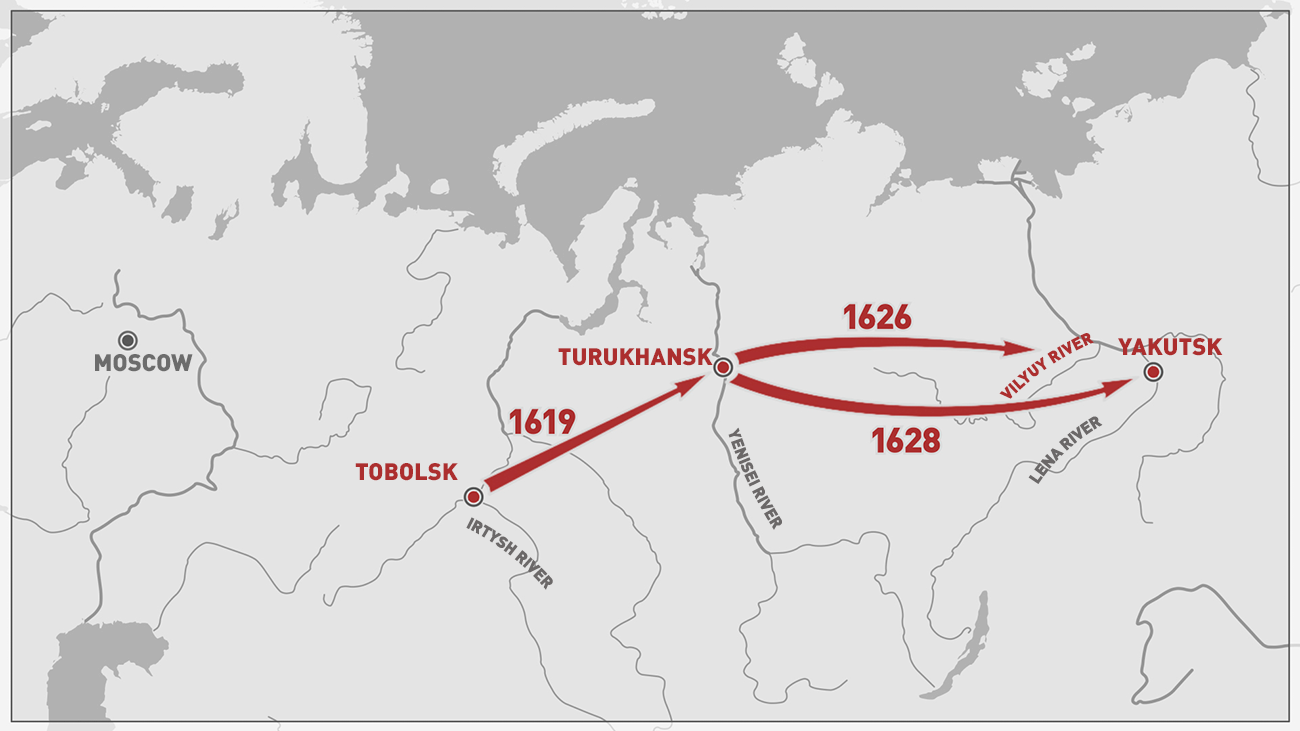 Illustration by Stepan Zharky
Illustration by Stepan Zharky
In 1619, after traveling more than 2,000 kilometers, a group of Russian soldiers reached the Yenisei River and established the first Russian settlement there. That same year they learned from a captured member of the Evenki tribe about another great river located another 1,000 kilometers from the Yenisei.
It took seven years before the Russians found this great river, the Lena. In fact, it was a group of volunteer industrialist explorers, headed by Pantelei Pyanda, that was the first to reach Yakutia. The journey from the Yenisei River took them three years.
In 1628, two years after Pyanda, a group of armed guardsmen (streltsy), led by officer Vasily Bugor, found a more convenient way to reach the Lena River, which made this area more accessible for Russians to inhabit. Soon, a fortress was built on the banks of Lena RIver and that eventually became the city of Yakutsk.
Explorers were attracted to these dangerous, faraway lands by the black fur pelts of the Siberian sable, which had become one of the most valuable and frequently exported Russian goods.
The Amur River and the Pacific Ocean
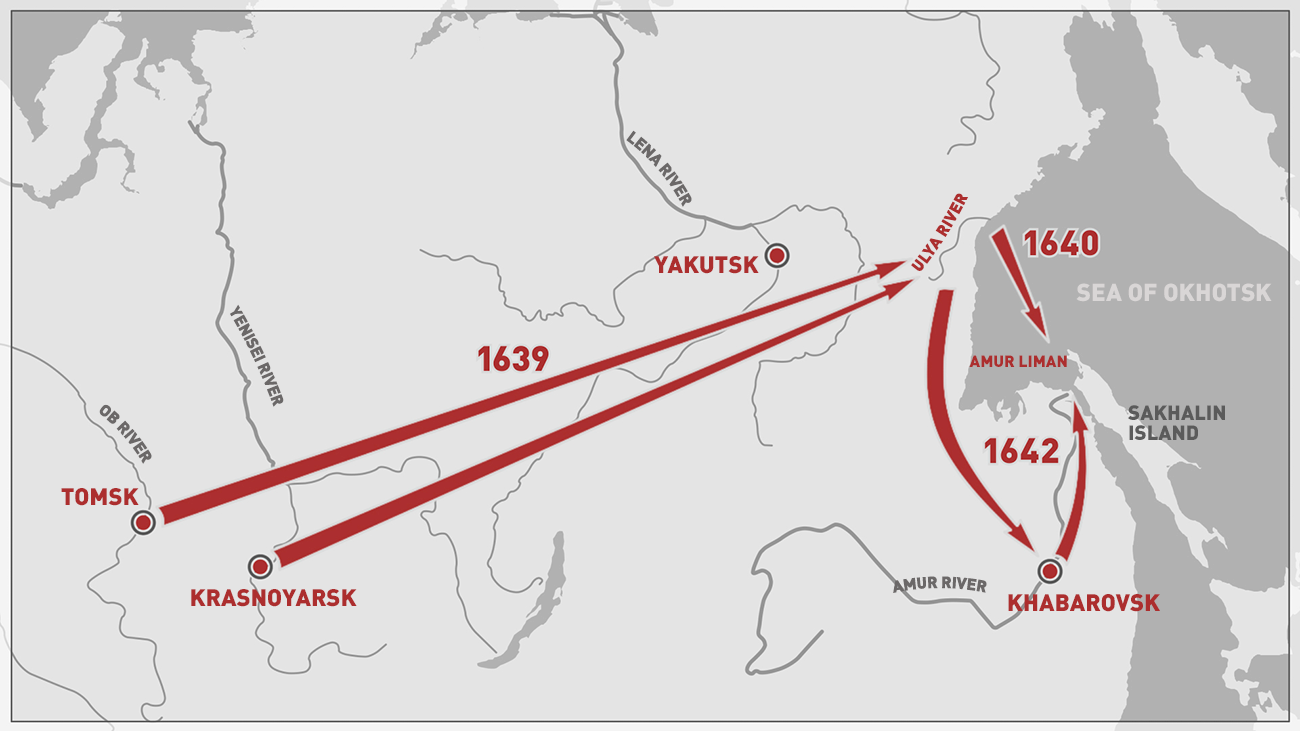 By Stepan Zharky
By Stepan Zharky
From the wooden fortress of Yakutsk, expeditions began to head even further east – to banks of the Arctic and Pacific Oceans.
In 1639, a group of Cossacks headed by Ivan Moskvin sailed 800 kilometers to the confluence of the Lena River. They then continued for more eight weeks, traveling against the river’s flow, until they reached the Sea of Okhotsk. They founded the first Russian settlement there, which is located in the north of what is now the Khabarovsk Region at the mouth of Ulya River (5,640 kilometers from Moscow).
Russian explorers were shocked to find a “fish that doesn’t exist in Siberian rivers,” as they described to their bosses. It turned out to be Pacific salmon.
From the indigenous Evenki people, Russian explorers learned that there was another big river located somewhere to the south. It wasn’t until 1640, after sailing along nearly 1000 kilometers of the Sea of Okhotsk’s coastline, that they reached the estuary of the Amur.However, the first Russian settlement on the Amur River didn’t appear until 1651, when it was founded by Yerofei Khabarov, for whom the city of Khabarovsk was later named. The Albasin fortress erected there would be the site of many attacks from the Chinese Manchus tribesmen.
In 1642, a group of 133 Cossacks, different from the group led by Moskvin, departed from Yakutsk in search of the Amur River. They were led by Vasily Poyarkov who had heard that by traveling down this river one could reach China. They sailed along the entirety of the Amur until they reached its mouth. It was there that the indigenous Ainu population told them about Sakhalin Island, which they claimed was inhabited by “hairy people.”
In the end, only 20 men from Poyarkov’s expedition of 133 managed to make it back to Yakutsk alive.
Kolyma and Chukotka
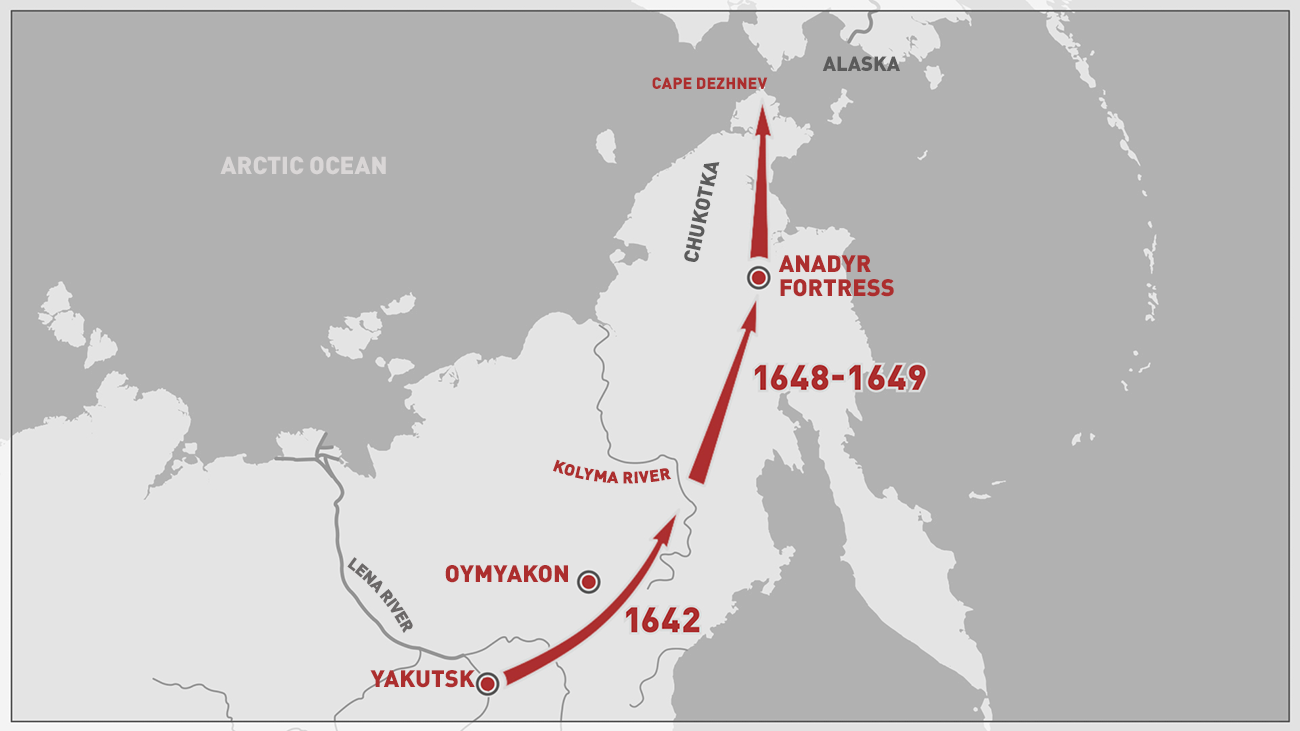 By Stepan Zharky
By Stepan Zharky
In the same year, 1642, another group, headed by Mikhail Stadukhin, set out from Yakutsk in search of the Amur River. They ended up finding the Kolyma River instead. They trekked for more than 1000 kilometers, through a territory that is now called Oymyakon. This is one of the coldest places on the planet with winter temperature sometimes getting lower than minus 70 degrees Celsius.
On the Kolyma River, Stadukhin established a small fortress and left a man named Semen Dezhnev in charge. This man would later become one of the most famous Russian pioneers and explorers, known for being the first man to reach Chukotka and to sail the channel between Asia and America. In fact, the easternmost point of Eurasia is named Cape Dezhnev in honor of this man.
In July 1648, Dezhnev reached what he called the “Icy Sea,” (the Arctic Ocean) while looking for trade opportunities in the form of furs and walrus ivory. Vicious storms destroyed three of the seven of Dezhnev’s ships, but those that remained intact reached Chukotka. The explorers discovered the Eskimo people who had been living there and referred to them as “toothed people” because of the walrus teeth they wore.
By the time Dezhnev had reached the Anadyr River, two-thirds of his team had died, and only 25 people remained. They spent the next 20 days walking through the mountains, starving, with no people or roads in sight. These were first people who ever managed to reach Chukotka.
Kamchatka and Kuril Islands
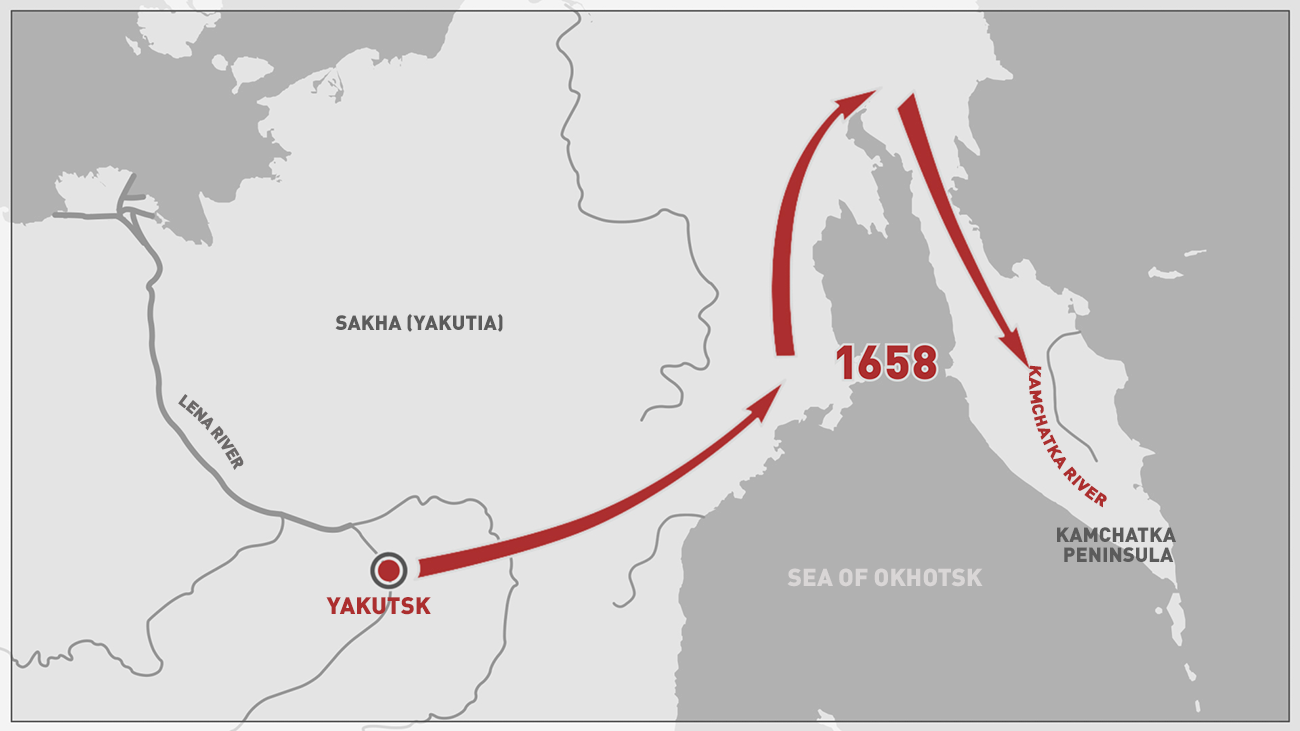 By Stepan Zharky
By Stepan Zharky
Stadukhin, who had discovered the Kolyma River, also became the first Russian to see the mountains of Kamchatka, albeit in the distance, while exploring the coast of the Sea of Okhotsk in 1651.
The first man to actually reach Kamchatka was Ivan Kamchatka, a Siberian Cossack and trader from Yenisei, and it is for him that the mountains are named. In 1658, he went to the northern banks of the Sea of Okhotsk looking for walrus ivory. All he found there were river pearls, but he learned from the locals that there was a big river to the south. It was only later that this river was also named the Kamchatka, in his memory, and eventually the entire peninsula came to bear the explorer’s name.
It’s not exactly clear which Russian was first to reach the Kuril Islands, stretching from Russia to Japan. However, the first man to research and describe the islands was Ivan Kozyravsky. He arrived at the island chain with a group of Cossacks and people from Kamchatka. He and his team explored the region from 1711-13 while drafting maps of the islands.
This is based on an article first published in Russian by DV Land.
If using any of Russia Beyond's content, partly or in full, always provide an active hyperlink to the original material.
Subscribe
to our newsletter!
Get the week's best stories straight to your inbox

